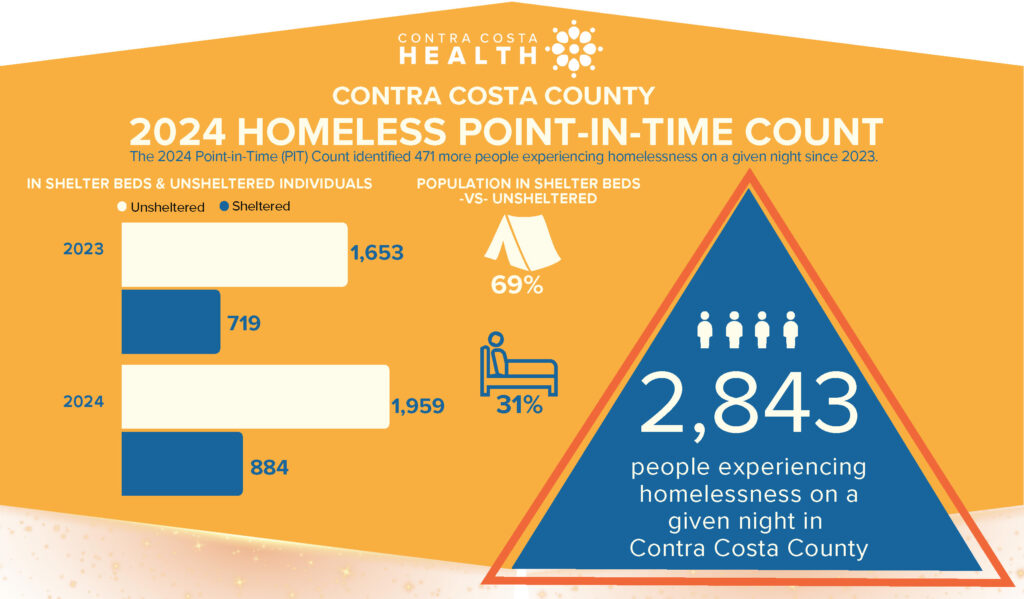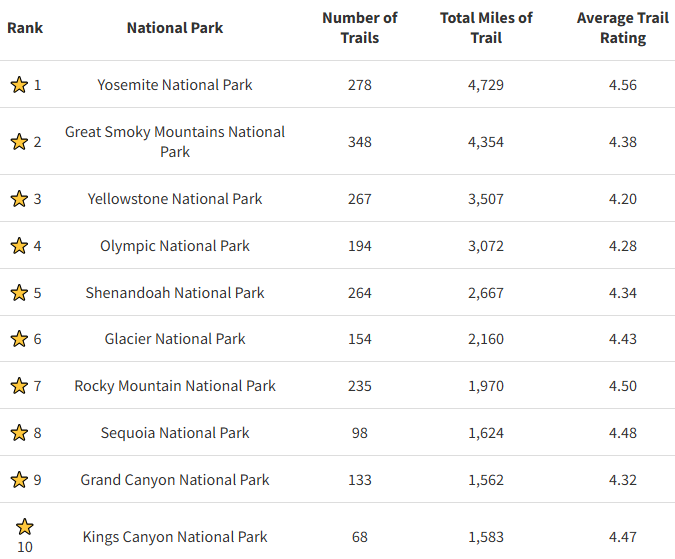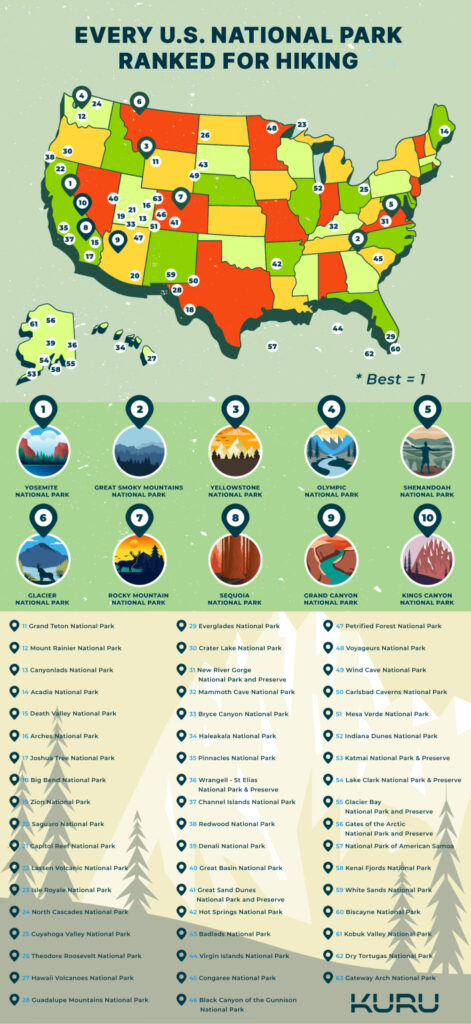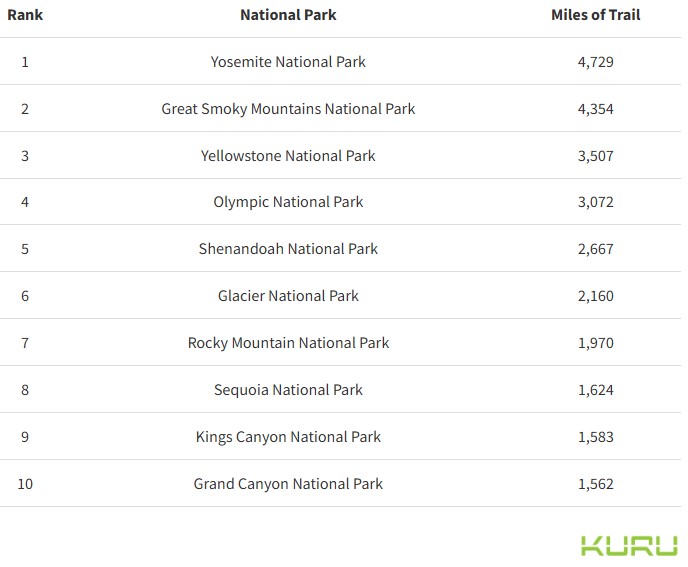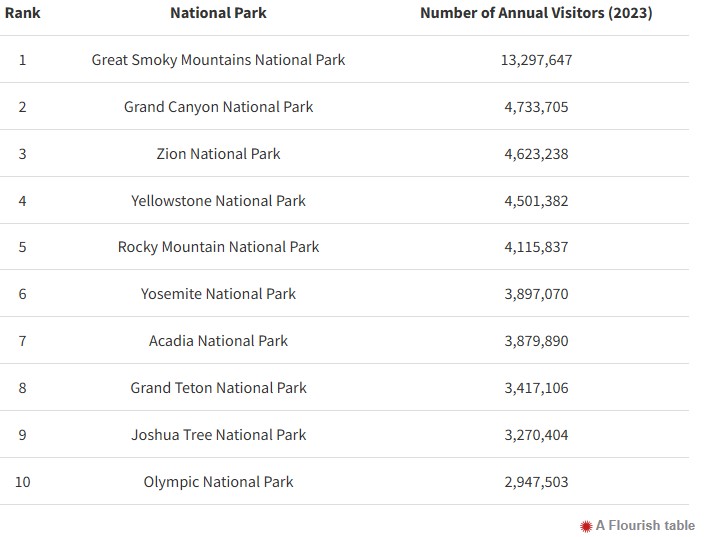Father’s Day themed activities Sunday, June 16; Juneteenth Free Park Day Wednesday, June 19
By Flora Csontos Acting Public Information Specialist, Public Affairs, East Bay Regional Park District
Thank you to the estimated 6,000 attendees who celebrated the East Bay Regional Park District’s 90th Anniversary at ParkFest at Lake Chabot Regional Park on May 11 and enjoyed a fun event filled with music, performances, food, and more. What a great time celebrating nearly a century of preserving open space and providing East Bay residents with access to nature close to home. Join us for more fun events throughout the year celebrating 90 years of East Bay Regional Parks, including “Explore Your Parks” programs, festivals, story sessions, picnics, and much more. For more information, visit www.ebparks.org/celebrating-90-years.
––––––––––
The largest creek restoration project in the Park District’s history was recently completed at Sibley Volcanic Regional Preserve, which removed several culverts and opened up 3,000 feet of creek to a more natural run. It is also the largest creek daylighting project in the entire Bay Area.
The Alder and Leatherwood Creek Restoration and Public Access Project, previously referred to as the McCosker Project, provides natural habitat for special status or protected species, including the California red-legged frog, California foothill yellow-legged frog, Alameda whipsnake, San Francisco dusky-footed wood rat, golden eagle, Cooper’s hawk, loggerhead shrike, northern harrier, and white-tailed kite. Water quality and streamflow were also improved by the project, providing new habitat for rainbow trout.
The project was made possible through $4 million in funding secured by Assemblymember Rebecca Bauer-Kahan in the 2019 state budget. Additional funding came from the Park District’s voter-approved Measure WW and other state and federal grants from the U.S. Environmental Protection Agency, Wildlife Conservation Board, Coastal Conservancy, California State Parks, and voter-approved Propositions 1, 84, and 50 allocated by the California Natural Resources Agency.
For more information, visit www.ebparks.org/about-us/whats-new/news/park-district-celebrates-grand-opening-alder-creek-and-leatherwood-creek.
––––––––––
Park District launches pilot program to streamline entry at Del Valle Regional Park. East Bay Regional Park District began a new pilot project on Memorial Day weekend to expedite park entry at Del Valle on weekends and holidays. Entry to Del Valle Regional Park on busy weekends and holidays can be very challenging as visitors line up at the entry kiosk to pay for park admission and parking. With the pilot project, visitors will pay a single $10 flat fee to enter the park rather than individual fees based on park use. The $10 flat fee covers park parking, trailers, and dogs. Fishing and quagga inspection fees can be purchased at the marina area. The $10 flat fee does not apply to Regional Parks Foundation members, who receive free park entry/parking at all Regional Parks as part of membership benefits. To help expedite entry, a limited number of passes will also be available for pre-purchase online at www.ebparks.org/parks/del-valle/pre-purchase-parking. As vehicles approach the kiosk, there will be a separate line for pre-paid parking, staff, members, and residents. For up-to-date information or to provide feedback, visit www.ebparks.org/parks/del-valle.
––––––––––
Join the Park District to celebrate Juneteenth on June 19. The Park District is celebrating Juneteenth with a Free Park Day and special naturalist-led programs on Wednesday, June 19, which is a state and federal holiday. All are welcome! Juneteenth is the oldest nationally celebrated commemoration of the ending of slavery in the United States. Join the Park District to celebrate and reflect. For more information, visit https://www.ebparks.org/we-celebrate/juneteenth.
––––––––––
A community meeting for the Briones Pilot Project on June 15 will share feedback on the progress made in the past year and what’s ahead for the project in its second year. The meeting is a chance for attendees to share their views on the pilot project, too. The in-person meeting will be held on Saturday, June 15, at 10 a.m. at the Alhambra Creek Staging Area of Briones Regional Park in Martinez. The Briones Pilot Project is a two-year project created to test new ways to safely share trails amongst bikers, hikers, and equestrians. The project also improves the trail experience for all users while protecting habitat, wildlife, and watersheds. For more information, visit www.ebparks.org/Briones-Pilot-Project.
––––––––––
Enjoy Father’s Day at the East Bay Regional Park on June 16. Celebrate Father’s Day in nature or check out one of the themed activities planned in Regional Parks: Anthony Chabot Campfire: WILD Dads! at 8 p.m. at Anthony Chabot Family Campground, Father’s Day Celebration at 11 a.m. at the Doug Siden Visitor Center at Crab Cove, or Father’s Day Family Hike at 1:30 p.m. at Del Valle. For more information, visit www.ebparks.org/calendar?terms=Father’s+Day.
––––––––––
Celebrate Regional Parks at Lakeside Laps on July 20. Mark East Bay Regional Park District’s 90th and the Regional Parks Foundation’s 55th Anniversary with a 5k, 10k, or half marathon at Lake Chabot Regional Park in Castro Valley. The Regional Parks Foundation event is a fundraiser supporting East Bay Regional Parks. Come celebrate wellness, community, and the beauty of the Regional Parks while enjoying a run along the lake. For more information, visit www.regionalparksfoundation.org/news-events/lakeside-laps.
The East Bay Regional Park District is the largest regional park system in the nation, comprising 73 parks, 55 miles of shoreline, and over 1,330 miles of trails for hiking, biking, horseback riding, and environmental education. The Park District receives an estimated 30 million visits annually throughout Alameda and Contra Costa counties in the San Francisco Bay Area.
Read More
2024 Point-in-Time Count identified 471 more people experiencing homelessness on a given night
Shows 75% have been homeless for 10 years or more
By Allen D. Payton
Homelessness in Contra Costa County increased by 471 people this past year according to the 2024 Homeless Point-in-Time (PIT) Count conducted by county staff and volunteers in January. There were a total of 2,843 people experiencing homelessness on a given night in the county versus 2,372 in last year’s count. Of those amounts the unsheltered population increased 18.5% to 1,959 from 1,653 in 2023.
Each year Contra Costa Health Services’ Continuum of Care conducts the PIT, as an annual census and survey to identify the number of people experiencing homelessness in our county. It plays a crucial role in securing funding and improving our response to the needs of people experiencing homelessness.
Statistics
The report shows 69% or 1,949 of the county’s homeless residents were unsheltered while 31% or 884 were in emergency shelter beds or transitional housing, with 39% of the unsheltered either outdoors or in tents, 11% in recreational vehicles (RV’s), 14% in cars and 5% in vans. Each of this year’s total figures were increases over last year’s count of 1,653 unsheltered and 719 in shelter beds.
The cities with the most unsheltered homeless people were Antioch with 413, followed by Richmond with 388, Concord with 173, Martinez with 158 and Pittsburg with 110. Antioch’s homeless population increased from 334 in 2023 and 238 in 2020 while Richmond’s decreased by 99 from 487, Concord decreased from 241, while Martinez increased from 140 and Pittsburg also increased from 58 last year. The report shows East County had the highest homeless population at 39%, while West County had 31% and Central County which includes the San Ramon Valley had 30% of the homeless population in the county.
The report shows 61% of the homeless were male, 38% female, and 0.6% identified as transgender or non-binary. The racial makeup of the homeless consisted of 39% White, 33% Black, 15% Hispanic/Latino and 9% multiracial. All other races made up 5% or less. Over half of the homeless population were aged 24-54 at 56%, while 29% were 55 and up, 7% were aged 18 to 24 and another 7% were under 18.
Under Population Characteristics, adult-only households made up the vast majority of the count at 95%, 57% were reported as chronically homeless, 5% were veterans, 15% of adults had been in foster care, and 45% of adults had spent one or more nights in jail or prison in the past year.
Under Self-Reported Health Conditions, the report shows 83% of households had at least one member with a disabling condition, 61% had a mental health condition, 59% had a substance use disorder, 49% had a chronic health condition, 49% had a physical disability, 17% were fleeing domestic violence and 1% had AIDS or HIV related illness.
The report also shows 75% had been homeless for 10 or more years, 10% from five to nine years, 11% from one to four years and 3% had been homeless for less than one year. Under the Age First Experienced Homelessness, 52% did while age 25-49, 24% while age 18-24, 13% under age 18 and 12% at age 50 or older.
26% Increase in Sheltered Individuals
The report provides some positive news that, “Contra Costa County increased temporary and permanent housing beds by 26% between 2023 and 2024” with gains in each of the five categories of Emergency Shelter, Transitional Housing, Rapid Rehousing, Permanent Supportive Housing and Other Permanent Housing from a total of 2,833 beds in 2023 to 3,561 this year.
Richmond Received $8.6 Million State Grant
UPDATE 1: According to District 2 Supervisor Candace Andersen’s weekly newsletter issued Friday, May 31st, “Some cities that sustained or strengthened efforts to address homelessness, particularly outreach, showed significant improvement, Richmond (-99) used an $8.6 million state grant to transition nearly 100 residents of a large encampment into housing. Concord (-68) has a homeless strategic plan and well-developed services for residents experiencing or at imminent risk of homelessness, including case management, housing navigation, household budgeting, and short-term rental assistance.”
Antioch wasn’t one of those cities, as the council voted last year to spend up to $2 million to lease and operate a motel to provide transitional housing. Andersen was the only supervisor or county staff member to so far provide the information about this year’s PIT Count to the public, other than the post of the report on the County’s website, as no press release was issued by Contra Costa Health on the matter.
Questions were emailed Monday morning, June 3rd, to Contra Costa Health and H3 staff, and all five supervisors asking why the information was being suppressed, how much money did county spend last year helping homeless residents get off the street and into transitional or permanent housing and if they know how much was spent by all of the cities in the county besides the $8.6 million grant in Richmond.
UPDATE 2: In a response later that morning, Contra Costa Health spokesman Karl Fischer wrote, “Contra Costa Health does not issue a media release regarding every report it produces. Most years, we do not issue a media release regarding data results from point-in-time counts.
The PIT infographic was posted at http://cchealth.org on Tuesday evening, May 28. Several of our media partners did publish the information later in the week, because they contacted our public information office requesting it, either before or after the graphic was posted, or because they found it on the website.
We’ve received your request for public records and will respond shortly.”
To date, the Contra Costa Health public information team has issued only one press release this year.
Methodology
The 2024 PIT Count methodology followed the Housing and Urban Development’s guidelines for a “night of” observational count followed by a random sample survey to gather demographic data and homeless experience. For more information about homeless services in the county see the Continuum of Care and the Contra Costa Health Services’ Health, Housing & Homeless Programs (H3). Please check back later for any additional updates to this report.
Read MoreUS DOT awards Contra Costa Transportation Authority SMART grant to transform transportation for seniors and those with disabilities
By Lindy Johnson, Director of External Affairs, Contra Costa Transportation Authority
WALNUT CREEK, CA – Thanks to the US Department of Transportation (USDOT), the Contra Costa Transportation Authority (CCTA) now has a $1 million boost to enhance mobility options for seniors and those with disabilities. County of Contra Costa officials gathered in Walnut Creek today as US Representative Congressman Mark DeSaulnier (CA-10) announced the federal Strengthening Mobility and Revolutionizing Transportation (SMART) award. The SMART grant funding will be used to implement a centralized call center with access to all relevant transportation data, so seniors and paratransit users can make real time transit choices through an Accessibility Application (App). The primary goal of creating an Accessibility App is to address equity and access through data sharing and will to transform transit to better serve seniors and those with disabilities.
“The Accessibility App is a much-needed virtual tool as many transit agencies do not have paratransit or other accessible transit data with real-time service options,” CCTA Chair Newell Arnerich said. “Transit should be easy, accessible and efficient. Our new technology will enable transit operators to make the best use of passenger’s specific needs, so they can provide easy to access options for the most vulnerable members of our county.”
“There is a growing trend in the transit service industry to develop and use data to help enhance transparency, improve efficiency, and foster innovation,” CCTA Executive Director Tim Haile said. “CCTA is partnering with research engineers at UC Berkeley to use data to build the Accessibility App which will be made possible thanks to the SMART grant.”
The Bipartisan Infrastructure Law established the Strengthening Mobility and Revolutionizing Transportation (SMART) discretionary grant program with $100 million appropriated annually for fiscal years (FY) 2022-2026.
The SMART program was established to provide grants to eligible public sector agencies to conduct demonstration projects focused on advanced smart community technologies and systems in order to improve transportation efficiency and safety.
Applying for a SMART grant is a competitive process, whereupon applications from all over the US are reviewed. Of the hundreds of applications submitted for funding, the US Department of Transportation saw the value in CCTA’s Accessibility App project and chose to support its development by awarding the project a $1 million grant.
“I am proud to have advocated for this funding for Contra Costa Transportation Authority that will help improve transportation accessibility and efficiency for members of our community, including seniors and individuals with disabilities,” said DeSaulnier. “I look forward to continuing to support CCTA as it implements this important App and continues its efforts to create a more convenient, accessible, and equitable transportation system across our district.”
County Supervisor Ken Carlson was on hand Friday to publicize existing pilot programs aimed to make transit easier for seniors and paratransit passengers. CCTA has partnered with other entities, such as the City of San Pablo, to connect senior and disabled transportation from San Pablo directly to county medical facilities in Martinez. CCTA also supports the Low-Income Fare Equity (LIFE) program to provide free rides to eligible paratransit users who are low-income earners.
The public can find out full details about CCTA’s existing and future accessibility programs as by going to https://ccta.net/accessibility/.
About the Contra Costa Transportation Authority:
The Contra Costa Transportation Authority (CCTA) is a public agency formed by Contra Costa voters in 1988 to manage the county’s transportation sales tax program and oversee countywide transportation planning efforts. With a staff of 24 people managing a multi-billion-dollar suite of projects and programs, CCTA is responsible for planning, funding, and delivering critical transportation infrastructure projects and programs that connect our communities, foster a strong economy, increase sustainability, and safely and efficiently get people where they need to go. CCTA also serves as the county’s designated Congestion Management Agency, responsible for putting programs in place to keep traffic levels manageable.
Allen D. Payton contributed to this report.
Read More
Yosemite ranked #1, Sequoia #8 & Kings Canyon #10
On this National Trails Day see how all 63 national parks rank for hiking, most trails, most miles of trails & most visitors
By KURU Footwear Media Team
National parks are a national treasure—and Americans know it.
In fact, the National Park Service saw 325.5 million recreation visits in 2023 (that’s up more than 13 million visitors from the previous year!), and almost half of Americans (48%) say visiting the national parks is on their bucket list.
National parks help preserve and protect many of our nation’s stunning natural landscapes, so we can behold the beauty for years to come—often through one of thousands of breathtaking hikes.
With summer coming up and kicking off (unofficially) with Memorial Day weekend in May, we wanted to dig into data and find the top 10 best national parks for hiking to help Americans discover their next adventure.
Which National Parks are the Best for Hiking?
With so many show-stopping trails in the U.S. National Park System (over 44,000 combined miles of them!), we knew we needed to narrow it down.
To find our top national parks for hiking, we looked at several metrics: high number of trails, miles of trails, and a high average trail rating score. We also found the crowd density in each park by comparing the average number of daily visitors with the acreage of the park.
Here’s what we found!
Yosemite National Park takes our #1 slot with 278 trails, 4,729 miles of trail, and a 4.56 average trail rating. Located in the Sierra Nevada mountains of California, Yosemite is known for its iconic and striking Half Dome, tall waterfalls, and giant Sequoia trees.
Let’s dig into a more detailed breakdown of parks ranked by number of trails, miles of trails and annual visitors!
Every National Park Ranked for Hiking
Here are our rankings of all 63 national parks based on our metrics. Total mileage was rounded up to the nearest whole mile for the purposes of the table.
As a note, our rankings are based on specific metrics, but everyone’s priorities are unique! So, when it comes time for your national parks trip, feel free to reference this list while ultimately choosing the parks that most inspire you. We feel every national park is worth a visit!
Which National Parks Have the Most Trails?
The national park system offers a tremendous total of 4,155 trails. Even if you ambitiously decided to hike one each day with no days off, you’d need a whopping 11 years to do it!
But if you’re looking for hiking options for the whole family, choosing a park with a high number of trails is a smart way to ensure there’s something for everyone.
Which National Parks Have the Most Miles of Trails?
When mileage matters most (or you’re just hoping to get your steps in!) choosing a park with plenty of miles of trails might be your best bet.
With an impressive 44,370 combined miles of trails within national parks, you certainly won’t be short of options. The longest trail in the National Park System is the North Country Trail—spanning 4,600 miles across eight states!
Which National Parks Get the Most Visitors?
Great Smoky Mountains National Park topped our list as the most visited, receiving almost 3 times as many visitors as the second most-visited national park, Grand Canyon National Park!
As you plan your next national park adventure, you may or may not want a lot of people around for the party. Here are the parks with the most visitors in 2023.
Final Thoughts & Tips for Hiking in the National Parks
Now that you’ve discovered more info about some of our nation’s top national parks, here are a few tips on how to prepare for a visit to your bucket-list destination!
- Do your research. Before you leave, we recommend planning your trip in advance by researching weather, trails you want to prioritize, trail difficulty, length, bathroom stops, and finding any needed lodging.
- Wear supportive footwear. Bring a pair or two of comfortable, supportive shoes with plenty of traction, as you could walk many miles per day as you explore.
- Stay hydrated. Bring plenty of water to get you through long days. It’s smart for each person to wear a hydration pack along with additional bottles of water if needed.
- Use sun protection. When in the sun, apply sunscreen every two hours, wear a hat and sunglasses, and wear moisture-wicking clothing with as much coverage as possible.
- Bring a first-aid kit. On the trail, you might not have immediate access to medical care, so bring a kit with you that includes the basics (think disinfectant, bandaids, ace bandage, etc.) until you can get more help.
Whichever park you decide on, we hope you have a spectacular visit!
Since 1916, the National Park Service has been entrusted with the care of our national parks. With the help of volunteers and partners, we safeguard these special places and share their stories with more than 318 million visitors every year. But our work doesn’t stop there.
We are proud that tribes, local governments, nonprofit organizations, businesses, and individual citizens ask for our help in revitalizing their communities, preserving local history, celebrating local heritage, and creating close-to-home opportunities for kids and families to get outside, be active, and have fun.
Taking care of the national parks and helping Americans take care of their communities is a job we love, and we need—and welcome—your help and support. Learn more on the National Park Service website.
Methodology and Sources
Methodology
We used data from the National Park Service and AllTrails to find the number of available trails in all 63 National Parks in the United States, then ranked each on a scale of best to worst based on number of trails, miles of trails, average trail rating, and park crowd levels.
We used Alltrails to find all of the available trails in each of the 63 National Parks, and analyzed them based on the following metrics:
Number of Trails (Total)
Total Distance of Trails (in Miles)
Average Trail Rating (1-5 Scale)
Number of Annual Visitors (2023)
Acreage of the National Park (Public Areas Only)
These variables were weighted as follows to achieve our final scores and subsequent rankings:
(40%) Number of Trails
(35%) Miles of Trail
(20%) Average Trail Rating
(5%) Park Crowd Levels
Each metric was normalized on a 0-1 scale with 1 corresponding to the measurement that would most positively affect the final score. These adjusted measurements were then added together with the weights mentioned above to get a score of 100.
Sources
1. AllTrails.com
2. National Park Service – Reports (General)
3. National Park Service – 2023 Recreation Visitors
4. National Park Service – Trails & Hiking
5. National Park Service – Acreage by Park
About KURU
At KURU, we’re on a mission to help you Heel Better™ with footwear technology designed to relieve foot pain, so you can live a life you love. Since launching our innovative technology in 2008, we’ve received more than 32,000 five-star reviews from thousands of customers who tell us their KURU shoes helped them with conditions (such as plantar fasciitis) and got them back to doing what they love.
Allen D. Payton contributed to this report.
Read More
Ryniqueka Dowell, Jeffrey, Jamari & Jamani Humble. (Source: GoFundMe) and suspect Ralph White, III. Source: KTVU
Vallejo man faces charges for murder, five other felonies for fatal hit-and-run crash in stolen car
GoFundMe account for surviving son and his father still receiving donations
By Allen D. Payton
In a press release from Jimmy Lee, Director of Public Affairs for the Office of the Contra Costa Sheriff-Coroner on Friday, May 31, 2024, Sheriff-Coroner David Livingston announced that a coroner’s jury had reached a finding in the March 23, 2023 death of 31-year-old Ryniqueka Dowell and March 27, 2023 death of 6-year-old Jamari Humble. The finding of the jury is that the manner of death is at the hands of another person, other than by accident.
The coroner’s jury reached the verdict in the inquest after hearing the testimony of witnesses called by hearing officer Matthew Guichard.
As previously reported, on March 23, 2023, at about 7:27 pm, the Hercules Police Department received information from the Contra Costa County Sheriff’s Office regarding a stolen 2021 Mazda SUV, possibly heading toward the City of Hercules on eastbound I-80. A Hercules Police Officer saw the Mazda exit I-80 eastbound onto northbound Willow Avenue. As the Officer caught up to the Mazda, the driver immediately began to accelerate. The Officer initiated a short pursuit of the SUV, before it collided into a 2017 Nissan passenger vehicle in the area of Parker Avenue and 4th Street in the City of Rodeo. The driver of the Mazda immediately got out of the vehicle and ran northbound onto Parker Ave. A perimeter was established, and the suspect was found, at a nearby liquor store. He was placed under arrest, and later transported to the Martinez Detention Facility.
The driver of the Nissan passenger vehicle was a 31-year-old, mother of twin boys, age six, later identified as Dowell.
On March 28, 2023, the Contra Costa DA’s office filed murder charges as part of a six-count felony complaint against then-20-year-old Ralph Ellsworth White, III of Vallejo (born Feb. 11, 2003).
A coroner’s inquest, which Sheriff-Coroner David Livingston convenes in fatal incidents involving law enforcement personnel, is a public hearing during which a jury rules on the manner of a person’s death. Jury members can choose from the following four options when making their finding: Accident, Suicide, Natural Causes, At the hands of another person, other than by accident.
According to a GoFundMe account set up to support the surviving twin son, Jamani Humble, and his father, Jeffrey, Jamani “suffered a broken leg along with other injuries” and Jamari was initially in the hospital “in critical condition…without any brain activity” but later succumbed to his injuries. As of Saturday, June 1, 2024, $38,395 had been raised toward the $50,000 goal.
According to the Contra Costa Sheriff’s Office the six-foot, 190-pound White is being held on no bail in the Martinez Detention Facility and his next court appearance is scheduled for Sept. 9, 2024.
Read More

TOP: Jazmin Ruiz (left), Vanessa Vera-Aguilar (center), and Pablo Gutierrez-Morales (right) are accused in the fatal stabbing of their coworker. (Booking photos: Pleasant Hill PD) BOTTOM: Arrest of Ruiz. (Photo: Pleasant Hill PD). Santiago Jacobo. Source: GoFundMe
Concord man, being held on immigration warrant, 2 Antioch women – one, an ex-girlfriend – suspected of killing Pittsburg resident Santiago Jacobo; all former co-workers
GoFundMe account for victim’s family surpasses goal
By Captain Matt Kristic, Pleasant Hill Police Department
Crime/Incident: Homicide – Penal Code 187
Date/Time Reported: February 10, 2024
Location: Pleasant Hill Park, 147 Gregory Lane, Pleasant Hill
Victim: Santiago Jacobo, 37-year-old resident of Pittsburg, CA
Suspects: Suspect #1 Pablo Gutierrez-Morales, 31-year-old resident of Concord, CA (In-custody)
Suspect #2 Vanessa Vera-Aguilar, 24-year-old resident of Antioch, CA (In-custody)
Suspect #3 Jazmin Ruiz, 25-year-old resident of Antioch, CA (In-custody)
Case Number: 24-411
————————–
On Friday, May 31, 2024, Pleasant Hill Police Investigators arrested three people in connection with the February 10, 2024, stabbing death of park employee Santiago Jacobo of Pittsburg.
Pablo Jose Gutierrez-Morales, 31 of Concord; Vanessa Vera-Aguilar, 24 of Antioch and Jazmin Ruiz, 25 of Antioch have been booked into the Contra Costa County Jail in Martinez under the charges of Murder and Conspiracy to Commit Murder.
During a three month-long investigation, Pleasant Hill Police detectives obtained evidence indicating the victim and suspects knew each other as they all worked together at The Watermark at San Ramon, an assisted living facility.
The evidence shows that the arrested suspects planned, coordinated, and carried out the attack on Jacobo on the night of February 10, 2024, after Jacobo had finished his shift working as a custodian at Pleasant Hill Park. (See related article)
Detectives determined that prior to Jacobo’s murder, he had been in a relationship with suspect Vera-Aguilar while another suspect, Gutierrez-Morales, was pursuing a new relationship with her.
Police detectives are asking anyone with information regarding Jacobo’s death and the involved suspects to contact the Pleasant Hill Police Investigations Bureau at (925) 288-4630.
Our thoughts and condolences remain with the Jacobo family.
The Pleasant Hill Police Department would like to thank the San Ramon Police Department for their assistance. We would also like to thank the Pleasant Hill Recreation and Parks District for their ongoing assistance throughout this homicide investigation.
According to the Contra Costa Sheriff’s Office, the five-feet, 10-inch tall, 180-pound Gutierrez-Morales (born 5/8/1993) is being held in the Martinez Detention Facility without bail and his arrest type is listed as Immigration. The five-foot tall, 105-pound Ruiz is being held in the West County Detention Facility on a no bail Ramey Warrant. No information about Vera-Aguilar was available in an online search from the Contra Contra Sheriff’s Office. However, according to her Facebook page, she attended Deer Valley High School and left in 2018. Efforts to reach Vera-Aguilar and Captain Kristic for additional details were unsuccessful prior to publication time.
UPDATE: When asked to explain why Vera-Aguilar is not listed as in custody, Captain Kristic later said, “All three are in custody being held on no-bail. Vera-Aguilar is also being held in the West County Detention Center. The Aquarius system the Sheriff’s Office uses was having trouble updating, today.”
Regarding Gutierrez-Morales’ arrest being listed as Immigration, he said, “An external document was sent to MDF from ICE (Immigration & Customs Enforcement). But all three suspects were booked on charges of murder and conspiracy to commit murder.”
“The suspects’ photos are being released due to the violent felonies associated with this case,” Kristic added.
A GoFundMe account for Jacobo, set up by his sister-in-law Maria Jacobo on behalf of his wife, Alejandra Jacobo, has raised $42,109 as of Saturday, June 1st, surpassing the goal of $35,000. According to the account, “He leaves behind a wife and 2 kids, son Santiago and daughter Mikaela. It feels so unreal how his life was taken in such a violent and cowardly way. Santiago was a kind hardworking man and will be missed by many loved ones.” The donations are intended “to cover funeral costs or any expenses Alejandra and her kids may have during this hard time.”
Allen D. Payton contributed to this report.
Read MoreDefendant allegedly misused PPP funds for his real estate investment business, EIDL for 10 employees that didn’t exist of a cleaning business that also didn’t exist to pay off personal debts, enrich himself in 2020, 2021
If convicted could face 20 years in prison on each of 3 counts of wire fraud and 5 years for submitting false writings to a government agency
By U.S. Attorney, Northern District of California
OAKLAND – A federal grand jury has returned an indictment charging a Contra Costa County man with wire fraud and other crimes relating to a scheme in which he fraudulently obtained more than $1.1 million in government-backed COVID-19 relief funds, announced United States Attorney Ismail J. Ramsey; Federal Bureau of Investigation (FBI) Special Agent in Robert K. Tripp; and Small Business Administration (SBA) Office of Inspector General (OIG) Special Agent in Charge Weston King of the Western Region.
According to the indictment filed this week, Lane Jenkins, 53, of El Sobrante, California, was president of a company called A & L Investments LLC (A&L), which was founded in 2016, headquartered in El Sobrante, and purported to purchase, renovate, and sell distressed properties. The indictment alleges that, in February 2021 and April 2021, Jenkins applied for and received two Paycheck Protection Program (PPP) loans totaling more than $1 million on the basis of false and fraudulent representations that A&L had dozens of employees and hundreds of thousands of dollars in monthly payroll expenses. In fact, A&L had zero employees and no monthly payroll. In December 2021, Jenkins applied for and received forgiveness of the first of those two loans, falsely certifying he had used the PPP funds to make payroll for A&L’s nonexistent employees. In fact, Jenkins had used the money for personal expenses and to pay off personal debts.
The indictment also states that, in July 2020, Jenkins applied for and received an Economic Injury Disaster Loan (EIDL) of nearly $95,000 for a maid and cleaning service he said he operated as a sole proprietor. The application falsely stated that Jenkins had 10 employees and gross revenues of $241,353. In fact, he had no employees and no revenues. Rather than use the EIDL funds he received on approved business expenses, Jenkins used that money to enrich himself.
The PPP was administered by the SBA as part of the Coronavirus Aid, Relief, and Economic Security (CARES) Act, a federal law enacted in March 2020 to provide billions of dollars in emergency financial assistance to millions of Americans suffering from the economic effects of the COVID-19 pandemic. The PPP provided forgivable loans to small businesses for job retention and certain other qualified business expenses. PPP funds were disbursed by SBA-approved third-party lenders.
The EIDL program is also administered by the SBA. It provides low-interest financing to small businesses, renters, and homeowners in regions affected by declared disasters. As relevant here, the CARES Act authorized the SBA to make EIDL loans of up to $2 million to eligible small businesses experiencing substantial financial disruption due to the COVID-19 pandemic. EIDL funds are disbursed directly by the SBA.
The Indictment charges three counts of wire fraud, in violation of 18 U.S.C. § 1343, and one count of submitting false writings to a government agency, in violation of 18 U.S.C. § 1001(a)(3).
An indictment merely alleges that crimes have been committed, and all defendants are presumed innocent until proven guilty beyond a reasonable doubt. If convicted, Jenkins faces a maximum statutory sentence of 20 years in prison on each of the three counts of wire fraud and a maximum statutory sentence of 5 years in prison on the fourth count, which charges him with submitting false writings to a government agency. However, any sentence following conviction would be imposed by the court after consideration of the U.S. Sentencing Guidelines and the federal statute governing the imposition of a sentence, 18 U.S.C. § 3553.
Jenkins has not yet appeared in court to face the charges against him.
Assistant U.S. Attorney Kenneth Chambers is prosecuting the case. The prosecution is the result of an investigation by the FBI and SBA-OIG.
According to his LinkedIn profile, Jenkins has operated his business since Nov. 2015 but according to corporationwiki.com, he formed the business in May 2016 which has three other associated individuals and is located in Pinole. In addition, since 2009 Jenkins has been employed as a Key Accounts Sales Manager for Southern Wine & Spirits.
Allen D. Payton contributed to this report.
Read More

Brandon Elder arrested for a Brentwood bank robbery on Jan. 26, 2022. (Photo: Brentwood PD) and his Facebook photo posted on Oct. 3, 2021.
Defendant robbed a bank only 19 days after release from custody for previous bank robbery
Brandon Elder has history of arrests dating to 2016 including 5 times in 2021 and 3 times in 2022
By U.S. Attorney, Northern District of California
SAN FRANCISCO – Brandon John Elder was sentenced to 63 months in prison for bank robbery, announced United States Attorney Ismail J. Ramsey and Federal Bureau of Investigation (FBI), San Francisco Field Office, Special Agent in Charge Robert K. Tripp. The sentence was handed down by the Hon. James Donato, United States District Judge.
Elder, 29 (born 2/14/1995), of Antioch, pleaded guilty to the charge on December 14, 2023. According to court filings, Elder walked into a bank in the Marina District of San Francisco on September 20, 2022, wearing a black hoodie, black facemask, and blue gloves. He approached the teller window, stated “this is a robbery,” and demanded “50s” and “100s.” The teller handed over $10,000 in cash to Elder, who ran out of the bank and back to his getaway car in a nearby parking garage. Elder was arrested two days later in Pleasant Hill, Calif., while shoplifting a PlayStation from a Target with $7,867 cash in his pocket. A grand jury indicted Elder on November 1, 2022, charging him with one count of bank robbery, in violation of 18 U.S.C. § 2113(a). Elder pleaded guilty to the charge without a written plea agreement.
Elder committed this bank robbery while still on post-release community supervision. He had been released from state custody only 19 days earlier after serving a custodial sentence related to the robbery of a bank he committed on January 26, 2022, in Brentwood, Calif. In addition, Elder already had been convicted of 11 other thefts in state court, including a violent incident during which he slashed a loss prevention officer with a box cutter. (See related article)
“Repeat offenders like Brandon Elder should not be allowed to continue terrorizing the community,” said United States Attorney Ismail J. Ramsey. “Enough is enough. This Office will ensure that criminals like Mr. Elder face serious repercussions for their actions.”
“Elder used threats and intimidation to terrorize the employees of the bank he robbed,” said Special Agent in Charge Robert Tripp. “His complete disregard for the law demanded justice, and justice he received with this sentence. The FBI will not waver when it comes to preserving the peace of our community by taking dangerous criminals off the streets.”
In addition to sentencing Elder to prison, Judge Donato ordered the defendant to serve a year of supervised release to begin after his prison term is completed. The defendant was immediately remanded into custody.
Assistant U.S. Attorney George Hageman is prosecuting the case with the assistance of Lakisha Holliman. The prosecution is the result of an investigation by the FBI.
According to localcrimenews.com, Elder was also arrested five times in 2021 and three times in 2022 by multiple agencies including Vallejo PD, Dublin PD, San Francisco PD, Antioch PD, Pleasant Hill PD and BART Police for crimes including driving with a suspended license, drug possession including for sale, vehicle theft, receiving stolen property – motor vehicle, evading an officer including wanton disregard for safety, resisting arrest, failure to appear, smoking on BART and burglary. (See related article)
In addition, Elder was also arrested twice in 2016, first on Feb. 1st at 4:30 p.m. by Antioch Police on an outstanding felony warrant then again on August 19, 2016 by Antioch Police and at that time was a known gang member, who had two felony warrants for his arrest. Several APD officers went to Elder’s residence in the 200 block of Rossi Avenue where he was contacted in his bedroom. Elder was arrested and sent to county jail.
According to his Facebook page, Elder is from Oakland, lives in Antioch and is single, went to John Swet High School in Crockett and works at Safeway. His last post was on Nov. 8, 2021, while at the DMV in San Francisco.
According to the Alameda County Sheriff’s Office, the five-feet, seven-inch tall, 135-pound Elder, who is white and has green eyes and brown hair, is being held in the Santa Rita Jail on no bail.
Allen D. Payton contributed to this report.
Read More
Conservative groups and LGBTQ+ rights supporters protest outside the Glendale Unified School District offices in Glendale, Calif., Tuesday, June 6, 2023. Several hundred people gathered in the parking lot of the district headquarters, split between those who support or oppose teaching about exposing youngsters to LGBTQ+ issues in schools. (Keith Birmingham/The Orange County Register via AP)
Protect Kids California’s effort would require schools to tell parents if their child signals gender changes, prevent biological males in girls’ sports and ban sterilization of children
Claim Attorney General’s ballot title and language change hurt signature gathering effort, lawsuit filed
“Our message is simple. Schools shouldn’t keep secrets from parents” – Protect Kids CA
By Allen D. Payton
California activists seeking to empower parents over their children’s decisions to identify as transgender failed to place a trifecta of restrictions on the November ballot known by the organizers as the Protect Kids of California Act of 2024. Attorney General Rob Bonta changed the ballot title to Restricts Rights of Transgender Youth. Initiative Statute and he changed the ballot language, as well which hampered the signature gathering efforts organizers claim.
According to Students First: Protect Kids California, the initiative will: (1) repeal the California law that permits students to compete in female’s sports and students to be in females’ locker rooms and bathrooms; (2) prohibit schools from deceiving parents about their student’s gender identity crisis and stop them from secretly transitioning a child; and (3) stop sex change operations and chemical castrations on minors.
The organization started late last fall to consolidate their three separate initiatives into one, and its signature-gathering efforts supported by 400,000 voters fell short of the 546,651 verifiable signatures that had to be collected within six months to make the presidential election ballot. The goal was to collect 800,000 signatures to be safe.
Organizers posted their complaint about Bonta’s ballot language changes on the group’s Facebook page on April 2. Initiative committee Executive Team member Nicole C Pearson wrote, “Every Californian, regardless of whether they agree with the initiative, should be concerned about an attorney general who ignores the law and uses his power to sabotage ballot initiatives. We plan to hold Bonta accountable for allowing his political agenda to get in the way of doing his job.”
The post included a link to an opinion on the Orange County Register website decrying the changes which reads, “As required by California law, proponents submitted the measure to Bonta to receive a neutral official title and summary to use in petitions. Bonta then returned the measure with a new title with a negative and misleading slant: the “Restricts Rights of Transgender Youth Initiative.” And he gave it a summary that was not only completely prejudicial and designed to mislead the electorate — it also contained lies.”
Then on Tuesday, May 28 the group issued a press release announcing the setback in a post on their Facebook page which reads, “We want to thank our tens of thousands of supporters and volunteers for this truly historic effort!Together, we collected over 400,000 signatures – an unprecedented achievement for a 100% grassroots effort. You really are amazing! While it is unfortunate we did not have enough signatures to make the 2024 ballot, we will build off this momentum to continue to fight for the principles set forth in the Protect Kids of California Act.”
The press release reads, “Protect Kids California announced on Tuesday, May 28, 2024, they collected an impressive 400,000 signatures for their proposed ballot measure but fell short of the 546,651 required to be collected within a 180-day timeframe to appear on the ballot.
Tens of thousands of volunteers gathered signatures from every county in California. The largest collection areas were Los Angeles, Orange, Riverside, San Bernardino, San Diego, Santa Clara and Alameda Counties.
A completely grassroots effort, Protect Kids California raised close to $200,000 from over 1,200 donors. This equates to less than 50 cents per signature, a fraction of the amount standard ballot measure committees spend.
“While we are disappointed we didn’t meet the threshold to qualify for the ballot, we are encouraged by the amount of support from every sector of the state. We gathered more signatures for a statewide initiative than any all-volunteer effort in the history of California.” “We had severe headwinds from the beginning. California Attorney General Rob Bonta issued a false and misleading Title & Summary for our initiative. That made our fundraising efforts more difficult. While we sued the Attorney General, a Superior Court Judge denied our motion in April. We plan to appeal the Superior Court Judge’s decision, at which time we will decide how to proceed in the future. If we had a little more time or a little more money, we would have easily qualified for the ballot.”
But battles over transgender issues will continue to burn bright in courts, school districts and the Legislature. Despite a setback, initiative organizers were buoyed by the 400,000 signatures that thousands of volunteers collected. They are confident that they will attract more donations and enough signatures to qualify for the November ballot two years from now — and find more support than leaders in heavily Democratic California assume exists.
“We’re very confident that voters would pass this if it gets to the ballot box,” said Jonathan Zachreson, a Roseville City school board member, co-founder of Protect Kids California and an official proponent of the initiative. “We gathered more signatures for a statewide initiative than any all-volunteer effort in the history of California.”
“We started around the holidays which didn’t help,” he added. “It was an all-volunteer effort. It usually takes about $7 million to get something on the ballot. We raised just under $200,000 which covered our costs. But we didn’t have money to pay signature-gatherers. We had around 25,000 to 30,000 volunteers. Our efforts really took off in the past two months. In the past few weeks, we were collecting so many signatures it was hard to keep up.”
The organizers proposed language for the three-pronged initiative read:
- REQUIRES schools to notify parents regarding children’s mental health concerns identified in school settings, including gender identification issues.
- PROTECTS girls’ competitive sports and school spaces to be for biological girls only.
- PREVENTS the sterilization of children by prohibiting the use of puberty blockers, cross-sex hormones, mastectomies and genital surgeries for minors
But Bonta’s ballot language for the initiative was changed to read instead:
- Requires public and private schools and colleges to: restrict gender-segregated facilities like bathrooms to persons assigned that gender at birth; prohibit transgender female students (grades 7+) from participating in female sports. Repeals law allowing students to participate in activities and use facilities consistent with their gender identity.
- Requires schools to notify parents whenever a student under 18 asks to be treated as a gender differing from school records without exception for student safety.
- Prohibits gender-affirming health care for transgender patients under 18, even if parents consent or treatment is medically recommended.
The second issue has sparked a firestorm within the past year.
Last week, a Democratic legislator introduced a late-session bill that would preempt mandatory parental notification. Assembly Bill 1915, by Assemblymember Chris Ward, D-San Diego, would prohibit school districts from adopting a mandatory parental notification policy and bar them from punishing teachers who defy outing policies of LGBTQ+ students.
Last year, Assemblymember Bill Essayli, R-Corona, introduced a bill that would require parental notification, but AB 1314 died in the Assembly Education Committee without getting a hearing. Committee Chair Al Muratsuchi, D-Torrance, reasoned the bill would “potentially provide a forum for increasingly hateful rhetoric targeting LGBTQ youth.”
Ward cited surveys of transgender and gender nonconforming youths that found most felt unsafe or unsupported at home. In one national survey, 10% reported someone at home had been violent toward them because they were transgender, and 15% had run away or were kicked out of home because they were transgender.
The California Department of Education has issued guidance that warns that parental notification policies would violate students’ privacy rights and cites a California School Boards Association model policy that urges districts to protect students’ gender preferences.
But Zachreson argues that even if children have a right to gender privacy that excludes their parents, which he denies exists, students waive it through their actions. “At school, their teachers know about it, their peers and volunteers know about it, other kids’ parents know about it — and yet the child’s own parent doesn’t know that the school is actively participating in the social transition,” he said.
In some instances, he said, schools are actively taking steps to keep name changes and other forms of gender expression secret from the parents.
“What we’re saying is, no, you can’t do that. You have to involve the parents in those decisions,” he said.
Ward responds that many teachers don’t want to be coerced to interfere with students’ privacy and gender preferences. “Teachers have a job to do,” he said. “They are not the gender police.”
A half-dozen school districts with conservative boards, including Rocklin, Temecula Valley and Chino Valley, have adopted mandatory parental notification policies. Last fall, California Attorney General Rob Bonta sued Chino Valley, arguing its policy is discriminatory. A state Superior Court judge in San Bernardino agreed that it violated the federal equal protection clause and granted a preliminary injunction. The case is on appeal.
Last July, U.S. District Court judge for Eastern California threw out a parent’s lawsuit against Chico Unified for its policy prohibiting disclosure of a student’s transgender status to their parent without the student’s explicit consent. The court ruled that it was appropriate for the district to allow students to disclose their gender identity to their parents “on their own terms.” Bonta and attorney generals from 15 states filed briefs supporting Chico Unified; the case, too, is on appeal.
While some teachers vow to sue if required to out transgender students to their parents, a federal judge in Southern California sided with two teachers who sued Escondido Union School District for violating their religious beliefs by requiring them to withhold information to parents about the gender transition of children. The judge issued a preliminary injunction against the district and then ordered the return of the suspended teachers to the classroom.
No California appellate court has issued a ruling on parent notification, and it will probably take the U.S. Supreme Court for a definitive decision. Essayli pledged to take a case there.
The National Picture
Seven states, all in the deeply red Midwest and South, have laws requiring identification of transgender students to their parents, while five, including Florida and Arizona, don’t require it but encourage districts to adopt ther own version., according to the Movement Advancement Project or MAP, an independent nonprofit.
Two dozen states, including Florida, Texas, and many Southern and Midwest states ban best-practice health care, medication and surgical care for transgender youth, and six states, including Florida, make it a felony to provide surgical care for transgender care. Proponents cite the decision in March by the English public health system to prohibit youths under 16 from beginning a medical gender transition to bolster the case for tighter restrictions in the United States.
California has taken the opposite position; it is one of 15 like-minded states and the District of Columbia with shield laws to protect access to transgender health care. They include New York, Oregon, Washington, Colorado and Massachusetts.
Twenty-five states have laws or regulations banning the participation of 13- to 17-year-old transgender youth in participating in sports consistent with their gender identification.
Not one solidly blue state is among those that have adopted the restrictions that Protect Kids California is calling for. But Zachreson and co-founder Erin Friday insist that contrary to the strong opposition in the Legislature, California voters would be open to their proposals. They point to favorable results in a survey of 1,000 California likely voters by the Republican-leaning, conservative pollster Spry Strategies last November.
- 59% said they would support and 29% would oppose legislation that “restricts people who are biologically male, but who now identify as women, from playing on girl’s sports teams and from sharing facilities that have traditionally been reserved for women.”
- 72% said they agreed, and 21% disagreed that “parents should be notified if their child identifies as transgender in school.”
- 21% said they agreed, and 64% disagreed that “children who say they identify as transgender should be allowed to undergo surgeries to try to change them to the opposite sex or take off-label medications and hormones.”
The voters surveyed were geographically representative and reflective of party affiliation, but not demographically, The respondents were mostly white and over 60, and, in a progressive state, were divided roughly evenly among conservatives, moderates and liberals.
Two Versions of Protecting Children
Both sides in this divisive cultural issue say they’re motivated to protect children. One side says it’s protecting transgender children to live as they are, without bias and prejudice that contribute to despair and suicidal thoughts. The other side says it’s protecting kids from coercion to explore who they aren’t, from gender confusion, and exposure to values at odds with their family’s.
Zachreson and Friday wanted to title their initiative “Protect Kids of California Act of 2024.” But Bonta, whose office reviews initiatives’ titles and summaries, chose instead “Restrict Rights of Transgender Youth. Initiative Statute.” Zachreson and Friday, an attorney, appealed the decision, but a Superior Court Judge in Sacramento upheld Bonta’s wording, which he said was accurate, not misleading or prejudicial.
“The ballot title was obviously biased and the summary was intentionally meant to deceive voters and hampered our efforts to get this on the ballot this year,” Zachreson continued. “The statutory requirement is to be impartial and factual. He did the opposite. He was biased and he had descriptions that were false. Bonta claimed there were no exceptions for student safety when notifying parents. But that’s not correct. It’s already in the law.”
Zachreson is appealing again. A more objective title and summary would make a huge difference, he said, by attracting financial backing to hire signature collectors and the support and resources of the California Republican Party, which declined to endorse the initiative. That was a strategic mistake in an election year when turnout will be critical.
“The people who support the initiative are passionate about it,” he said.
Effort for November 2026 Ballot Continues
The organizers may have to start over but a lawsuit about the biased title and summary was filed asking for a change in the language, to use the signatures already gathered and to grant an extension.
“The appeal won’t be heard until after the November election,” Zachreson shared.
If a judge rules in their favor it will make it easier for the group to complete the signature gathering to qualify for the next General Election ballot which will be in November 2026.
Political observer Dan Schnur, who teaches political communications at USC, UC Berkeley and Pepperdine University, agreed that the gender debate could have motivated Republicans and swing voters to go to the polls.
“There’s no question that the Attorney General’s ballot language had a devastating effect on the initiative’s supporters and it could have almost as much of an impact on Republican congressional candidates this fall,” he said.
John Fensterwald who writes about education policy and its impact in California for EdSource.org contributed to this report.
Read MoreMobile franchise expands in Contra Costa, giving back to community, schools and organizations
By Cia Abulencia, PR Associate, All Points Public Relations
BRENTWOOD, Calif. – Bringing tropical tunes and cups of shaved ice everywhere it stops, Kona Ice is expanding in California. Introducing its distinctive blend of entertainment, frozen treats and FUN-draising, the Kona Ice experience is unlike any other in the area. Serving up good vibes in a cool ride, Kona Ice is now cruisin’ through Contra Costa County.
“I’m thrilled to bring Kona’s refreshing shaved ice to the community. Beyond satisfying sweet cravings, we’re dedicated to supporting local schools and athletic groups through our ongoing fundraising efforts,” said Jordan Sabella, owner of Kona Ice of Brentwood. “The enthusiasm we’ve received for our new business reflects our commitment to being a positive presence in the community.”
Kona Ice’s escape from the ordinary begins as tropical calypso music fills the air at each event and group gathering. Thanks to Kona’s customizable self-service system, everyone continues the fun with overflowing cups of shaved ice and choosing from 10 of the most popular flavors on the truck’s Flavorwave™. Guests also have the option to choose from the additional 20-plus flavors and 500 different combinations offered.
“With a background rooted in both sales and engineering, I understand the intricate dynamics of business and the importance of forging meaningful connections,” said Sabella. “My mission with Kona Ice is to spread joy and make a tangible difference. I aspire to expand our reach with additional trucks, ideally covering Brentwood, Oakley, Antioch and Pittsburg.”
Dedicated to making a difference in local areas, Kona Ice continues to be committed to philanthropy in the communities it serves, raising $180 million in total donations nationwide since 2007. Jordan Sabella is continuing the world’s largest food truck franchise’s tradition of donating thousands of dollars each year to local school groups, teams, and community organizations. Sabella pledges to give back a percentage of the proceeds from each event he hosts.
“I’ve had the privilege of witnessing countless inspiring stories within our franchise system. Jordan embodies the spirit of entrepreneurship and community engagement that defines our brand,” said Tony Lamb, founder and president of Florence, Kentucky-based Kona Ice. “His dedication to spreading joy and making a difference through Kona Ice of Brentwood is a testament to the values we hold dear. With his background in Sales and Engineering, coupled with a passion for helping others, Jordan will continue to thrive, bringing smiles and support to his community with every shaved ice served.”
Beyond fundraisers, popular spots for the food truck franchise include stops throughout Brentwood at fairs, festivals and high school events.
To learn more about Kona Ice of Brentwood and to book your next event, contact Jordan Sabella by email at jsabella@kona-ice.com or by phone at (510) 423-8604.
About Kona Ice
Founded in 2007 by Tony Lamb, Kona Ice launched its first Kona Entertainment Vehicle (KEV) in Florence, Kentucky, offering a unique combination of cleanliness, friendliness, and a one-of-a-kind experience, featuring the opportunity to create your very own shaved ice on the self-serve Flavorwave™, while enjoying the soothing sights and sounds from the tropics, all while giving back to each community Kona Ice serves. Since its inception, Kona Ice has given back more than $180 million to neighborhood schools, organizations and teams. Today, Kona Ice has grown to more than 2,800 mobile units that serve 49 states across the country.
Kona Ice has been named to Entrepreneur Magazine’s Franchise 500® list for 11 consecutive years, earning a spot on the Franchise 500® Hall of Fame, and most recently being named #1 in the “Frozen Desserts” and “Ice Cream” categories. In addition, Kona was named to the Franchise Business Review Top 200 list in the overall “Top 50” and “Enterprise” categories. Other accolades include being named a “Top 100 Most Innovative Franchise” by Franchise Business Review and a “Top Franchise for Veterans.” The brand has earned many other nationwide, industry and local awards. For more on Kona Ice, visit the brand’s online Newsroom and follow us on Facebook, Twitter, and Instagram for the latest news.
For more information about booking Kona Ice for a fundraiser or event, visit www.kona-ice.com. To learn more about available franchise opportunities, visit www.ownakona.com or call (800) KONAICE.
Read More








